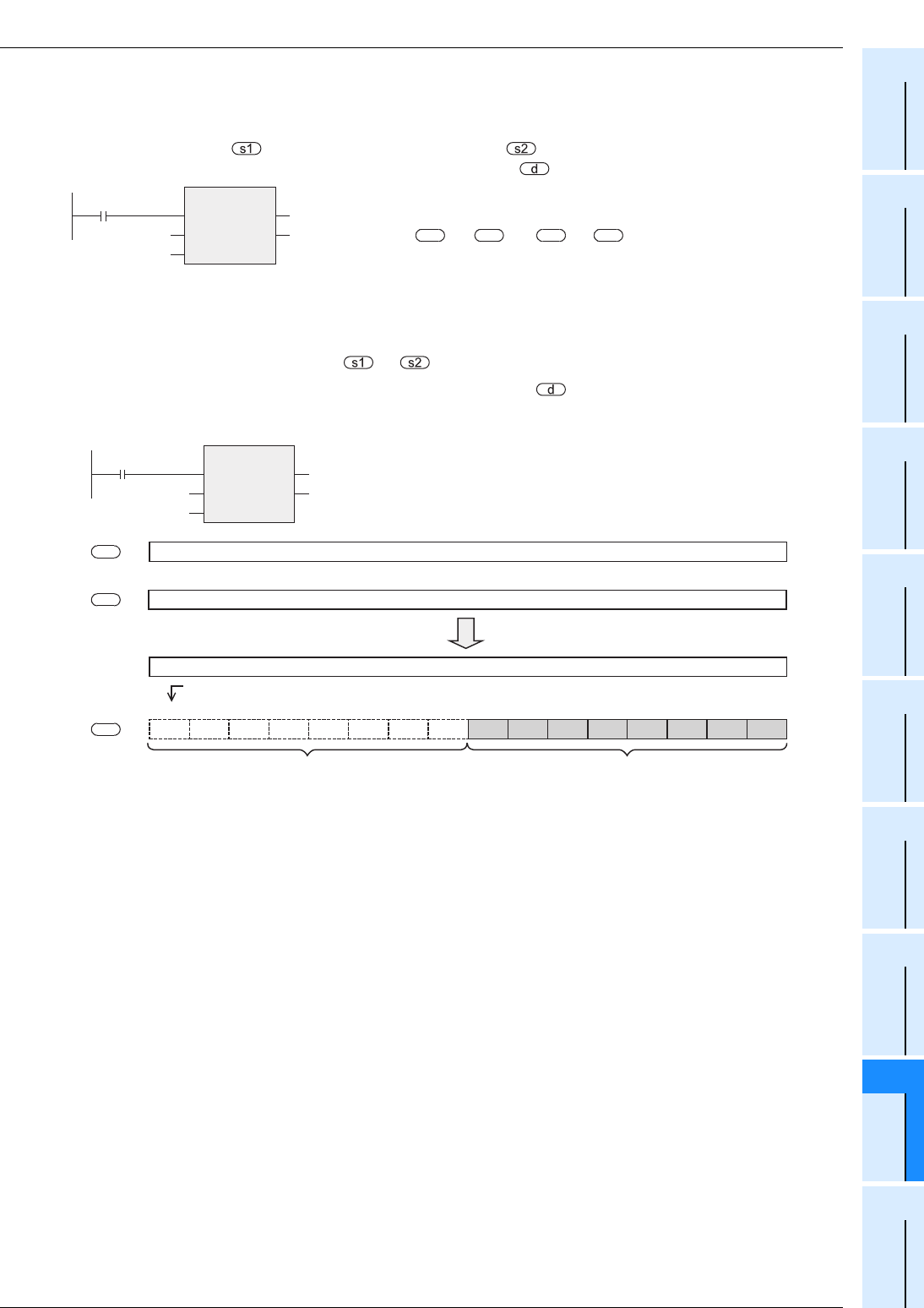
9 Applied Instructions (Arithmetic and Logical Operation)
9.3 MULP / Multiplication
175
FXCPU Structured Programming Manual
[Basic & Applied Instruction]
1
Outline
2
Instruction List
3
Configuration of
Instruction
4
How to Read
Explanation of
Instructions
5
Basic Instruction
6
Step Ladder
Instructions
7
Applied Instructions
(Program Flow)
8
Applied Instructions
(Move and
Compare)
9
Applied Instructions
(Arithmetic and
Logical Operation)
10
Applied Instructions
(Rotation and
Shift Operation)
Function and operation explanation
1. 16-bit operation(MULP)
The data specified by is multiplied by data specified by in the binary format, and the multiplication
result is transferred to 32-bit (double word) device specified by .
• The most significant bit of each piece of data indicates the sign (positive: 0 or negative: 1), and data is
multiplied algebraically.
(5×(-8)=-40)
• When a constant (K) is specified in or , it is automatically converted into the binary format.
• When a digit (K1 to K8) is specified for the device specified by :
A digit can be specified in the range from K1 to K8.
For example, when K2 is specified, only low-order 8 bits can be obtained out of the product (32 bits).
Command input
MULP
EN
s1
s2
ENO
d
Device storing
the multiplication
result
BIN BIN BIN
( ) × ( ) → ( +1, )
16 bits
s1 s2 d d
16 bits 32 bits
Multiplication
data 1
Multiplication
data 2
Command input
K53
K15
MULP
EN
s1
s2
ENO
d
K2Y000
When command contact turns ON
×
K15(H000F)
K53(H0035)
K795(H031B)
0 0 0 ··· 0 0 1 1 0 0 0 1 1 0 1 1
Operation result is output to K2Y000
Y027 Y026 Y025
···
Y013 Y012 Y011 Y010 Y007 Y006 Y005 Y004 Y003 Y002 Y001 Y000
Not output
Sign bit (0=Positive 1=Negative)
d
s1
s2


















